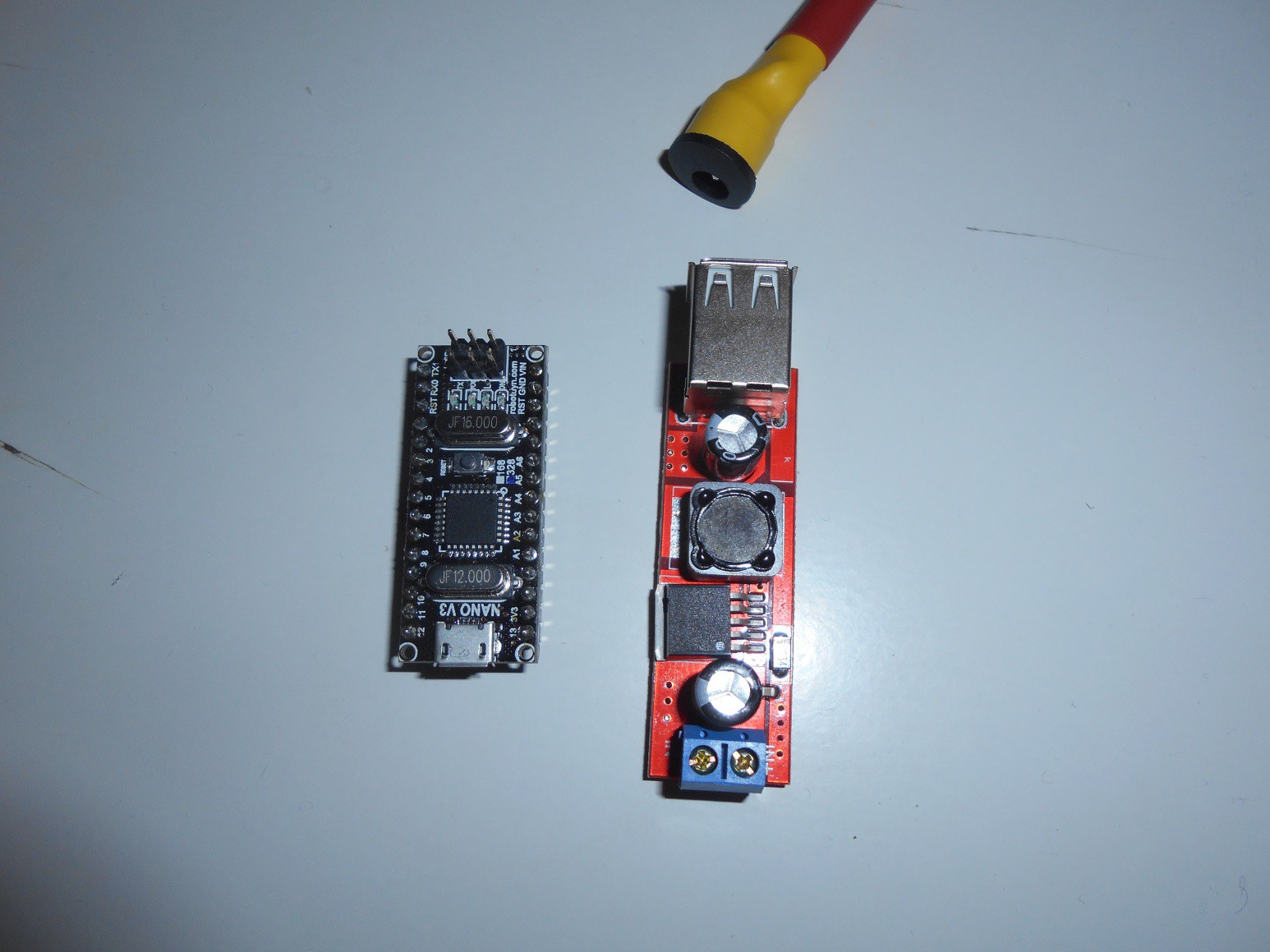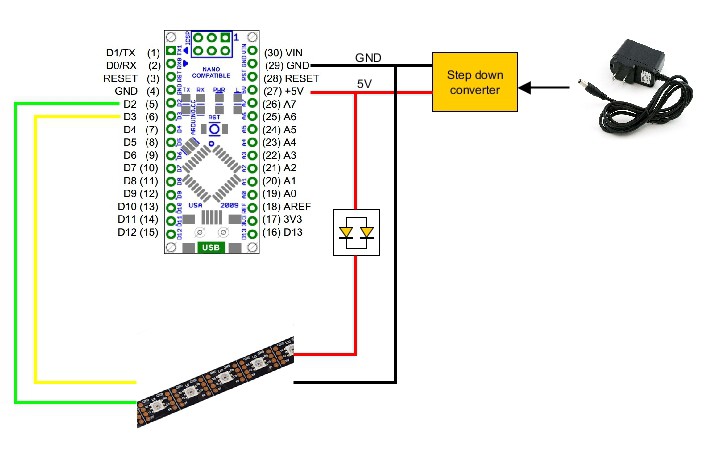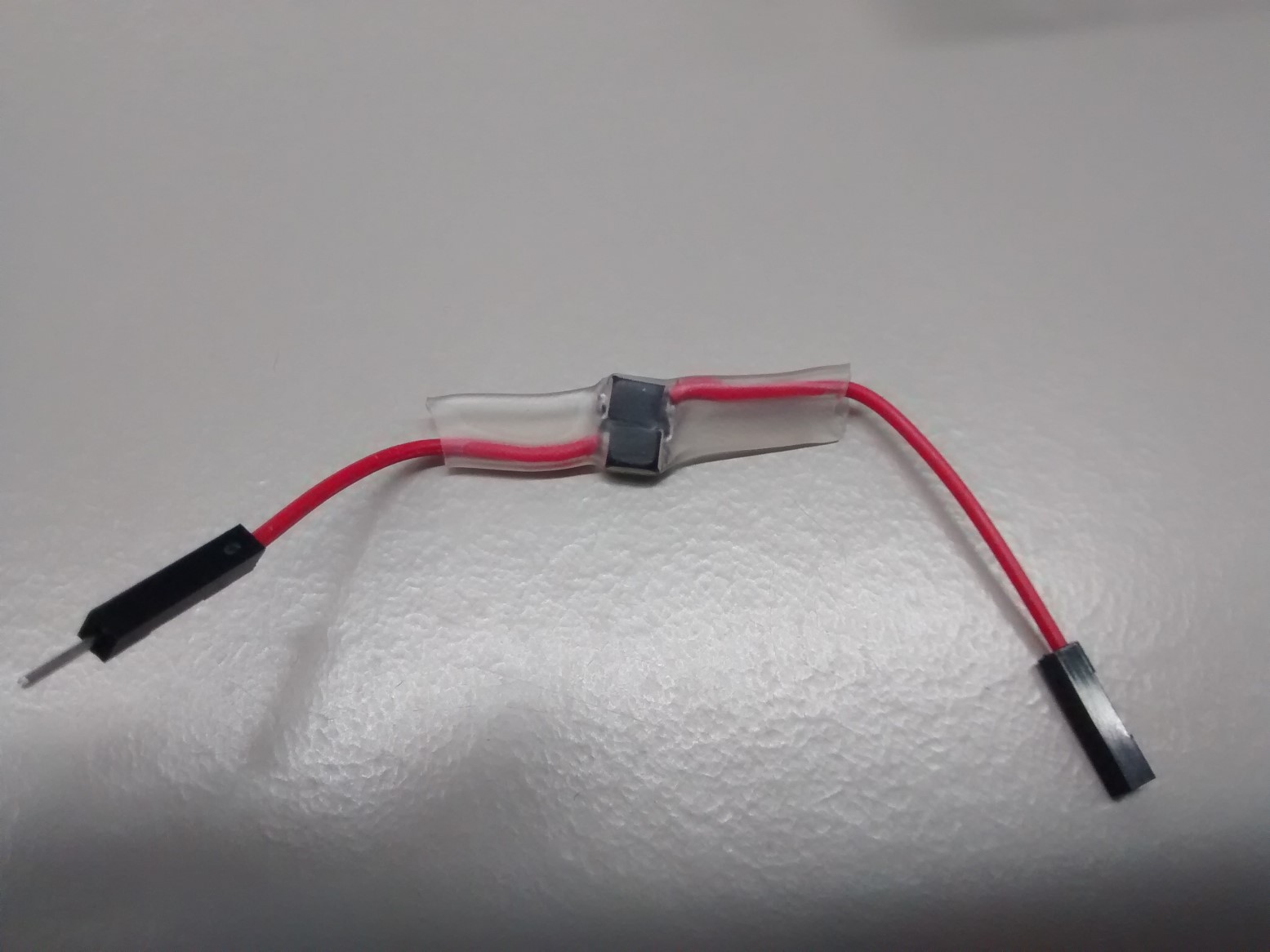After building up the bulbs, it is time to making a proper enclosure in order to put everything in it. And selecting all the components needed. While regarding the box we already have it, it is missing a proper supply for the LEDs, in case of full brightness is wanted.
The components
We wanted to power up both from USB and from an external power supply, so that it is possible to communicate with the lights and removing the USB form the PC without removing the power form them.
We used a cheap buck converter to scale down to 5V, 3A with input between 6V and 40V. That is why I make a female power jack to to be fit inside the enclosure and being connected to the step down converter. This should be fine, since the all 26 LEDs shall absorb less than 2A at full brightness. Moreover, keeping the same power supply, it is possible to power the strip from both sides in case too much drop on the wire happens. But each APA102 is absorbing, somewhere around 50mA with all the LEDs on. This means that we may be fine with our supply.
As mentioned before, from the local hackerspace, the first grabbing choice was an Arduino Nano. Turns out to be cloned, with all the issues of the compatibility of the USB to serial converter. But is the fastest choice. So, here below the Arduino, the converter and the jack.

I also suspected that the APA102 LEDs can get damaged if reversed supply is applied. Therefore, a removable couple of parallel anti-reverse shottky diodes are inserted to handle up to 2A on the string, despite nominal voltage will be less due to the drop. And I had no time on setup an ideal diode circuitry. They are removable just in case the drop will create problems in the string.
![]()
The connections and the assembly
The diagram of the electrical connections described above is shown here, where all the power is taken form the external supply and, if possible, when the supply is not present it is taken from the Arduino USB.

In the box, surprisingly, everything fits:

The missing part is the final, complete assembly and a proper firmware.
 Enrico
Enrico
Discussions
Become a Hackaday.io Member
Create an account to leave a comment. Already have an account? Log In.